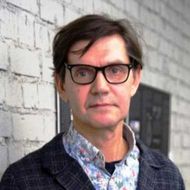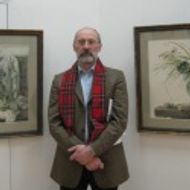- A
- A
- A
- ABC
- ABC
- ABC
- А
- А
- А
- А
- А
- HSE Campus in St. Petersburg
- School of Arts and Humanities
- Department of History
- News
- ASEEES 48th Annual Convention
-
Department
-
Educational programmes
Address:
190068 Saint Petersburg
123 Griboedov channel, Room 123
Phone:+7 (812)786-92-49
Postal address:
190068 Saint Petersburg
123 Griboedov channel
The Department of History was created in 2012. The overarching goal of the department is systematic development of the field of global, comparative, and transnational history as a potent tool of overcoming the limitations of national history canon, fostering interdisciplinary dialogue in the field of social sciences and humanities, and brining new public relevance to historical knowledge. The department mission includes the development of new type of historical undergraduate and graduate education in Russia and pioneering new research fields in Russian historiography in dialogue with the global historical profession.
De Gruyter Oldenbourg, 2025.
In press
Chukcheeva M.
Nineteenth-Century Art Worldwide. 2025.
In bk.: Women, Gender, and Technosciences, 1900–2020. A Beard to Govern. Routledge, 2025. Ch. 7. P. 123-140.
Khvalkov E., Levin F., Кузнецова А. Д.
Working Papers of Humanities. WP. Издательский дом НИУ ВШЭ, 2021

ASEEES 48th Annual Convention
Anton Kotenko, Junior Research Fellow:
Annual Convention of Association for Slavic, East European, and Eurasian Studies seems more of a show performances than a scholarly event. Its participants together with their institutions testify their presence in science, present, ‘book’ and advertise the topics of their research, than deliver papers in expectation of immensely fruitful discussions. A sheer scale of the event makes it different from the small workshops centered around a particular topic. Even though my section on the western borderlands of the Romanov empire (Bessarabia, Lithuania, Ukraine) caused a lively exchange of questions, it was more of an exception reasserting a general rule.
As I am doing spatial history each of such big conferences interests me from the perspective of a quite recent «spatial turn in history». This year’s convention surprised me with a little number of «geographic» papers and even gave an impression that the turn already passed away without even properly started. The only «spatial» topic, which was actively discussed during the convention, was the application of GIS by historians. However, it is related more to a visualization of the results of our research than to a methodology of studying space. One paper, which I liked the most, was delivered by Charlotte Gohr from Herder-Institut in Marburg on ‘silence’ and white spaces on maps, which the author was trying to uncover with the help of comparing the data on these spaces with their aerial photo images.
An important section, which probably attracted the largest number of audience, was a roundtable on the new histories of Russian empires with Ilya Gerasimov, Nancy Kollmann, Valerie Kivelson, Ronald Suny and Alfred Rieber, moderated by Alexander Semyonov. Generally speaking, ‘empire’ turned out to be the key concept of the convention as it was mentioned in the majority of sections, which I visited.
Certainly, one of the key events of every convention has been the acceptance of the ‘golden balls’ to the authors of the best books on the history of the region. It was a great honor to attend this year’s ceremony as the most prestigious prize, Wayne Vucinich Book Prize, was awarded to our colleague, Ronald Suny for his book on the history of the Armenian genocide.

